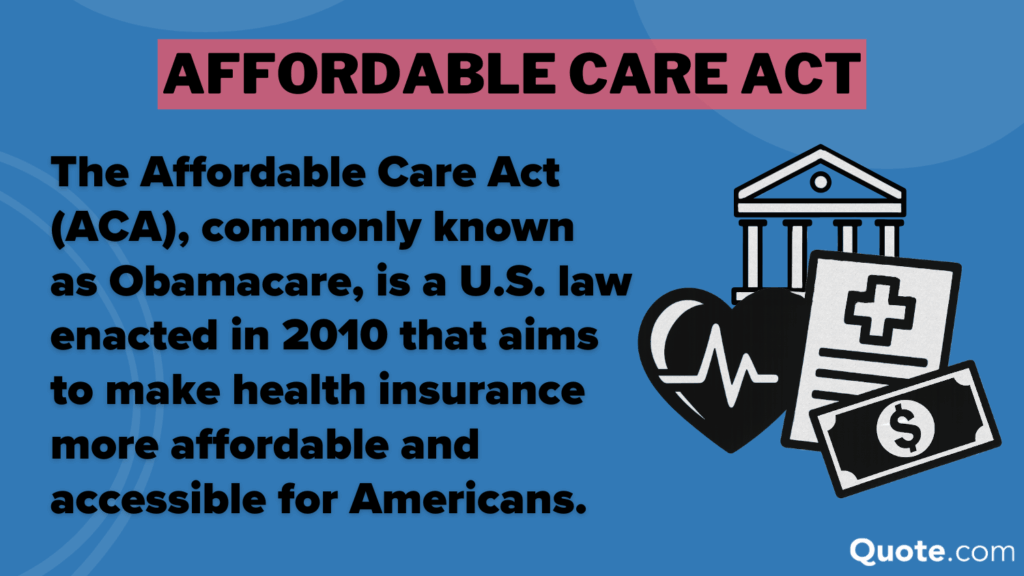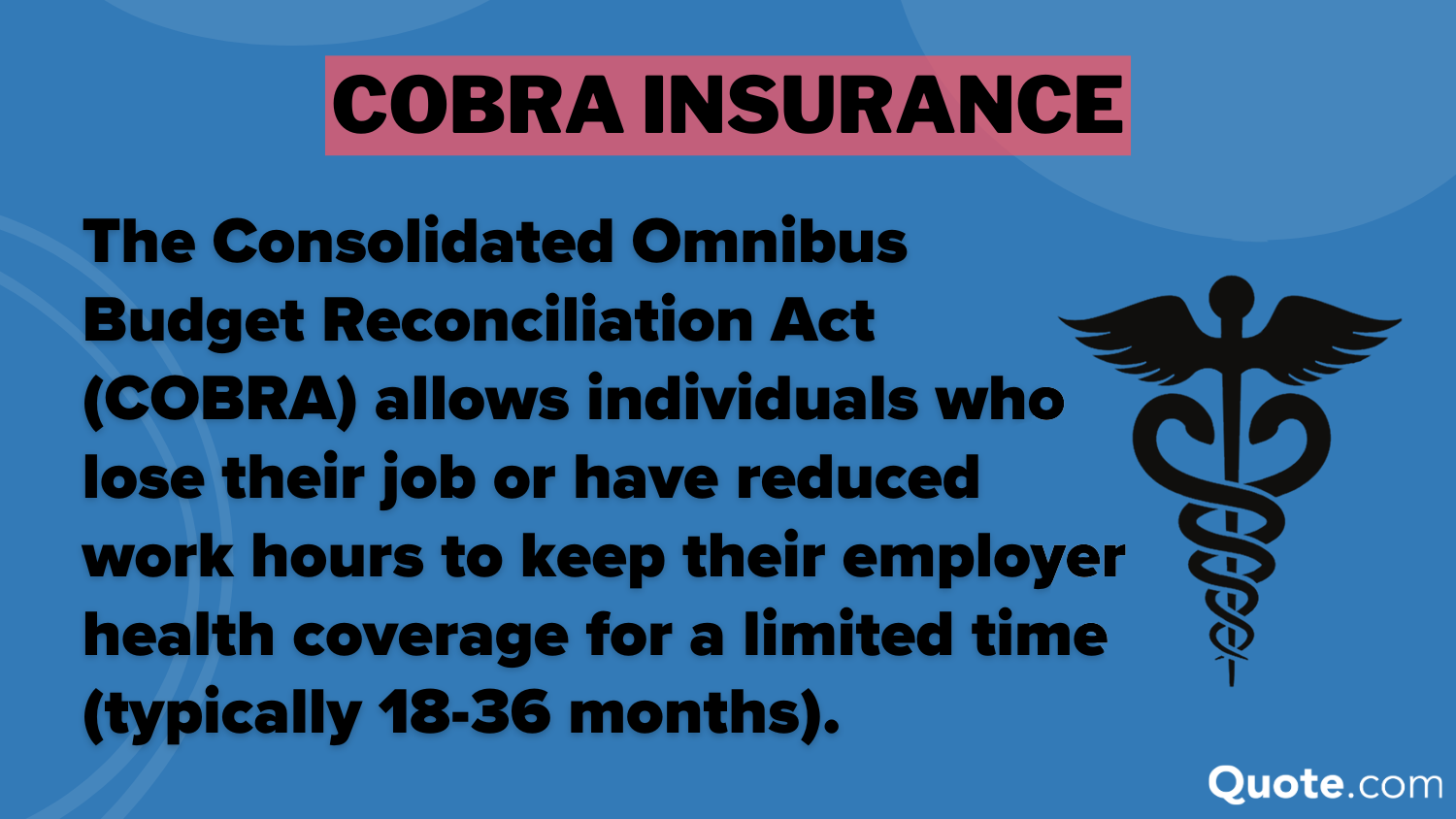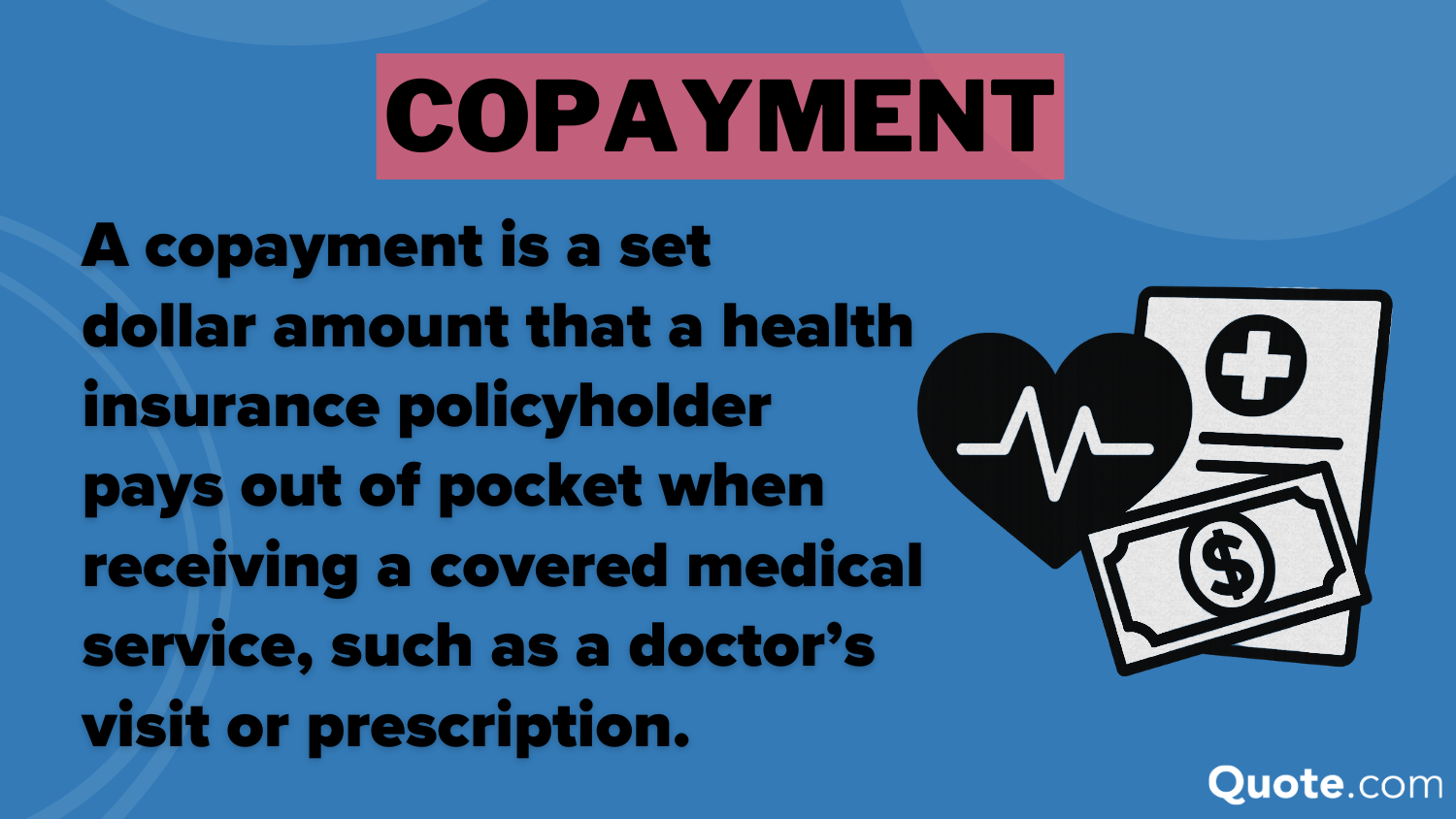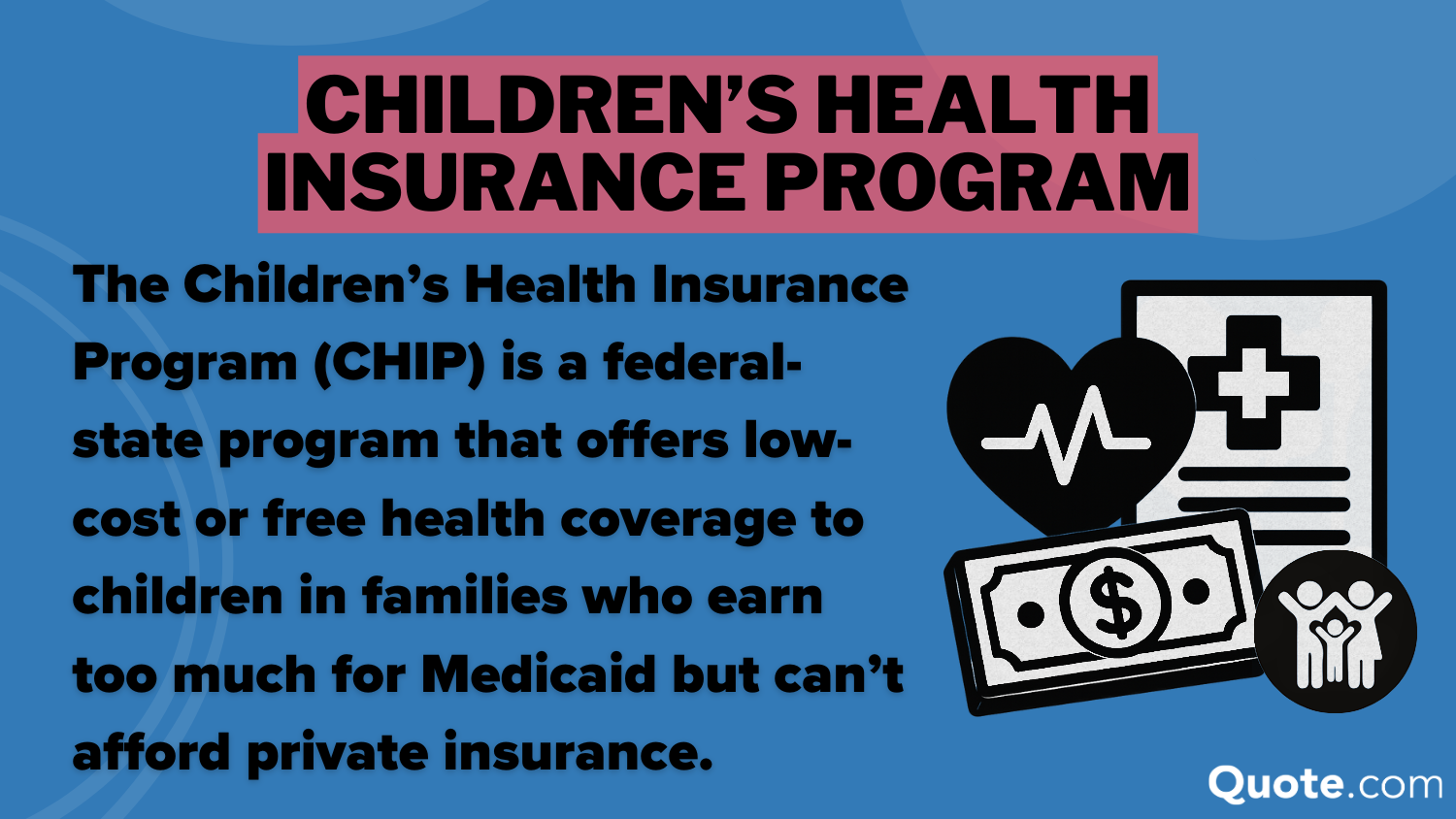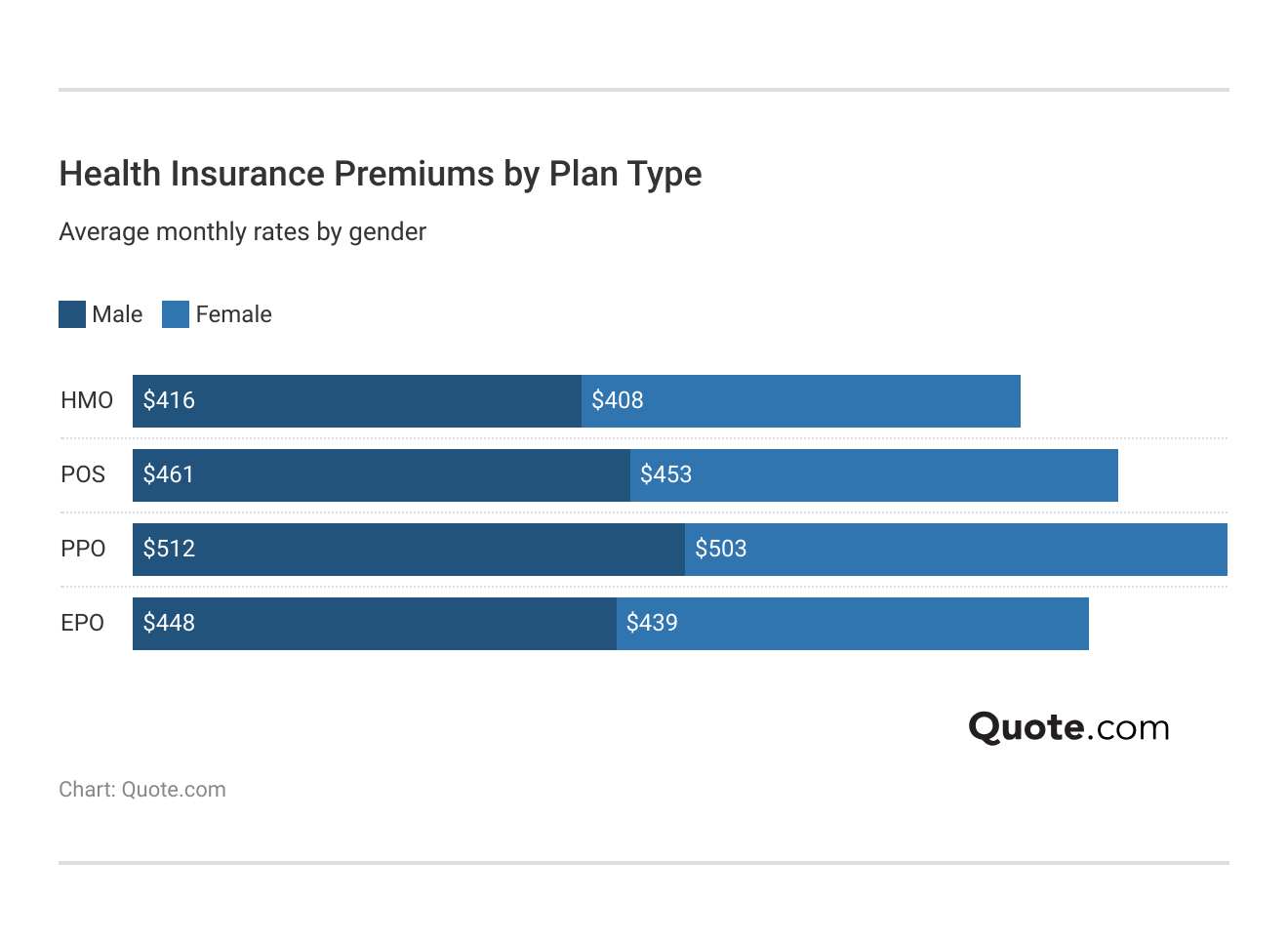Health Insurance (2025 Guide)
Discover the complete guide to health insurance, featuring bronze plans starting at $462 per month. This guide helps by showing how high-deductible plans and HSAs can save up to $4,150 tax-free while maintaining no-cost preventive care, such as screenings and vaccines, under federal health care protections.
Read more Secured with SHA-256 Encryption





Table of Contents
Table of Contents


Insurance and Finance Writer
Luke Williams is a finance, insurance, real estate, and home improvement expert based in Philadelphia, Pennsylvania, specializing in writing and researching for consumers. He studied finance, economics, and communications at Pennsylvania State University and graduated with a degree in Corporate Communications. His insurance and finance writing has been featured on Spoxor, The Good Men Project...
Luke Williams


Senior Director of Content
Sara Routhier, Senior Director of Content, has professional experience as an educator, SEO specialist, and content marketer. She has over 10 years of experience in the insurance industry. As a researcher, data nerd, writer, and editor, she strives to curate educational, enlightening articles that provide you with the must-know facts and best-kept secrets within the overwhelming world of insurance....
Sara Routhier


Licensed Insurance Producer
Dani Best has been a licensed insurance producer for nearly 10 years. Dani began her insurance career in a sales role with State Farm in 2014. During her time in sales, she graduated with her Bachelors in Psychology from Capella University and is currently earning her Masters in Marriage and Family Therapy. Since 2014, Dani has held and maintains licenses in Life, Disability, Property, and Casualt...
Dani Best
Updated November 2025
Our complete guide to health insurance helps you select plans that prioritize preventive care, support for chronic conditions, and federally regulated protections.
- Health insurance includes COBRA plans lasting up to 36 months
- Medicaid waivers aid disabled people with state-set income limits
- CHIP offers children dental care with low monthly family premiums
It explains how claims-free health insurance policyholders may qualify for premium discounts of up to 20% through insurer-sponsored safety programs. Explore how to finance what your health insurance won’t cover with funds and rates.
Our health insurance guidance also explains how the Centers for Medicare & Medicaid Services oversee marketplace subsidies and enforce the $9,100 individual out-of-pocket maximum. Call (855) 634-0435 to speak with a licensed agent about your Medicare options.
Looking for the best health insurance in the USA? Start with our complete health insurance guide and compare rates for free by entering your ZIP code.
Health Insurance Coverage Basics
Health insurance helps you pay for doctor’s appointments, prescriptions, blood tests, and any medical procedure. A consumer pays a monthly insurance premium to access certain doctors within the provider’s health care network. Each insurance plan specifies what is and is not covered.
Health Insurance Plan Types Comparison| Plan Type | Flexibility | Primary Feature | Best for |
|---|---|---|---|
| Catastrophic | Very Low | Emergency coverage for under 30 | Young Adults |
| EPO | Medium | No referrals, in-network only | Cost-Conscious |
| HDHP | High | High deductible, HSA eligible | Tax Planners |
| HMO | Low | Requires PCP & referrals | Budget Shoppers |
| POS | Moderate | Hybrid of HMO & PPO | Coordinated Care |
| PPO | High | Out-of-network access | Choice Seekers |
| Medicaid | Low | Income-based public insurance | Low-Income Families |
| Medicare | Moderate | Government for 65+ or disabled | Older Adults |
Going without health insurance is risky, as you’ll have to pay out of pocket for all medical services. The median cost of a typical emergency room visit is $2,715, according to a 2024 study by the Agency for Healthcare Research and Quality.
Many people don’t buy health insurance because it’s too expensive. In 2023, approximately 26.4 million Americans were uninsured.
Their health suffers: One in five uninsured adults skip medical treatment due to cost, often forgoing preventive care like blood tests or cancer screenings. Insurance covers at least some of your hospital bills and protects you from unexpected medical costs.
All Americans are required to have health insurance. If not, you will likely be subject to a penalty fee. The penalty fee is 2.5% of your household income or $695 per adult, whichever is higher. It increases annually with inflation.
Additionally, a penalty fee is imposed when an insurance plan fails to cover certain benefits, such as maternity treatment or prescription drugs.
Critics consider these to be excessive coverage mandates that raise the cost of insurance, but advocates argue that Americans deserve to have their basic needs covered. There are, however, exceptions to the penalty. Americans who live abroad or are incarcerated do not have to pay it.
You can also file for a financial hardship or religious exemption. The cornerstone of the Affordable Care Act, this health insurance mandate is under debate in Congress and may be changed.
Read More: Comparing Health Insurance Plans
Free Health Insurance Comparison
Compare Quotes From Top Companies and Save
Secured with SHA-256 Encryption
How to Get Health Insurance
There are many ways to get health insurance coverage in the United States. Compare individual or family plans through the Health Insurance Marketplace to find tailored options based on coverage, premiums, and subsidies. If you qualify, Medicare, Medicaid, and CHIP also offer low-cost coverage.
Under the Affordable Care Act, insurers can no longer deny coverage to individuals with pre-existing conditions.
Options depend on your age, employment status, and income. Here are other options besides private insurance:
- COBRA: If you lose your job, you could get continued coverage through COBRA, though you’ll pay the full premium.
- Medicare: Americans aged 65 and older can obtain health care coverage through Medicare, a federal health insurance program. To compare Medicare plans, call (855) 634-0435 and get help from a licensed insurance agent.
- Medicaid: Low-income individuals may qualify for Medicaid, a joint federal and state program that offers free or low-cost coverage.
- Children’s Health Insurance Program (CHIP): Children whose parents don’t qualify for Medicaid may also be eligible for child health insurance coverage under CHIP.
Everyone else, such as those who are self-employed, must purchase it themselves, typically through a government Health Insurance Marketplace. You can also buy it directly from the insurance company.
How to Use the Health Insurance Marketplace
Health insurance options vary by state, so it’s essential to obtain coverage for the state where you reside. To get started, visit HealthCare.gov during the annual open enrollment period. In most states, this is where you can purchase coverage.
You can also contact the Marketplace Health Center at 1-800-318-2596 or seek in-person assistance in your community. However, some states use their own health insurance exchange.
States With Their Own Health Insurance Exchange| California | Massachusetts | Rhode Island |
| Colorado | Minnesota | Utah |
| Connecticut | Mississippi | Vermont |
| Idaho | New Mexico | Washington |
| Maryland | New York | Washington, D.C. |
Before you log on, determine whether you qualify for a subsidy or advanced premium tax credit to help lower the cost of health insurance. If your household income is less than four times the federal poverty level, the government will assist you in paying for insurance.
In 2017, that’s $48,240 for an individual and $98,400 for a family of four. Please note that you can only receive an advanced premium tax credit if you purchase insurance through the Marketplace, not through employer-sponsored insurance.
Discover more by reading our guide: The Best States for Employer-Provided Health Insurance
What to Look for in a Marketplace Health Plan
The level of the plan relates to how you and the insurer share costs. When comparing health plans, consider not only the monthly cost but also the overall benefits and coverage that each plan provides. Also, weigh the maximum deductible, which is the limit of how much you will pay for medical services.
Health Insurance Monthly Rates by Metal Tier| Company | Bronze | Silver | Gold | Platinum |
|---|---|---|---|---|
| $519 | $565 | $639 | $1,051 | |
 | $487 | $521 | $612 | $978 |
| $603 | $637 | $704 | $1,168 | |
| $541 | $574 | $652 | $1,095 | |
| $590 | $620 | $681 | $1,145 | |
| $478 | $502 | $588 | $945 | |
 | $507 | $534 | $598 | $913 |
 | $462 | $496 | $579 | $935 |
| $470 | $512 | $585 | $1,015 | |
| $576 | $601 | $663 | $1,092 |
If you have a Bronze high-deductible health plan, you will pay more out-of-pocket when visiting the doctor than if you have a low-deductible Platinum plan. Explore our Aetna Insurance review to determine which plan type best suits your needs.
Patients who see doctors regularly may want a Gold or Platinum plan. In the Health Insurance Marketplace, there are four metal categories:
- Platinum: Covers around 90% of medical expenses
- Gold: Covers around 80% of medical expenses.
- Silver: Covers around 70%.
- Bronze: Covers roughly 60% of costs.
Also, pay attention to whether the health insurance plan only covers services within its network. Insurers typically only help pay the cost of visits to in-network providers, or they may charge you more when you visit an out-of-network provider.
Health Plan Details
Health insurance plans vary significantly in terms of price and flexibility. The Affordable Care Act requires that all plans cover certain basic services, such as hospitalization and preventive care, but not others, like adult dental care.
Yet, just because a certain service is included, it doesn’t mean it is covered at every hospital. Most plans only help cover the cost of treatment at doctors and hospitals within their network. Understand how to sign up for Medicare and get the right plan. Then, call (855) 634-0435 to get help choosing the right Medicare plan for you.
Types of Health Insurance Plans
When shopping for insurance on the Marketplace or comparing employer-sponsored plans, you will come across several types of insurance plans:
- Health Maintenance Organization (HMO): Covers only in-network care and requires a primary care physician for specialist referrals.
- Preferred Provider Organization (PPO): Covers both in- and out-of-network providers, with no referrals required, though out-of-network costs may be higher.
- Exclusive Provider Organization (EPO): Covers only in-network care, but doesn’t require referrals or a primary care physician.
- High Deductible Health Plan (HDHP): Has lower monthly premiums but higher out-of-pocket costs, with deductibles ranging from $1,300 to $6,550.
These plans can be combined with a health savings account (HSA) to cover medical expenses using tax-free funds. Typically, plans with low premiums offer limited flexibility, and if you want more provider options, you’ll likely pay more.
HDHPs qualify you for HSA contributions each year. In particular, confirm if your deductible meets IRS minimums.
Melanie Musson Published Insurance Expert
Young people may benefit from a high-deductible plan paired with a health savings account. If you don’t visit the doctor often and can save money tax-free, it may be a smart financial choice. Health insurance plans can be complicated, with hidden costs and fine print.
What type of health insurance plan is it? Is it an HMO or a high-deductible health plan? These plans will determine the level of flexibility you have in visiting doctors outside of the plan’s network and whether you will need referrals to see a specialist.
Who’s in the provider network? What hospitals and doctors are part of the insurer’s network? If you have a primary physician, check if they are part of the network. Otherwise, you may end up paying extra for out-of-network doctors.
Some low-cost plans are limited to public hospitals and nonprofit clinics. These typically require more planning, since you may have to wait a long time to get an appointment.
What are the premiums and deductibles? Many people think a low monthly premium sounds good. But what if it’s a high deductible? You may end up spending more than you bargained for. Low deductibles are best if:
- You go to the doctor often.
- You have a chronic or pre-existing medical condition.
- You take expensive medications.
- You plan to have a baby.
- You’ll likely need surgery soon.
High deductibles are best suited for individuals who are healthy and rarely visit the doctor. What are the benefits? Read the health plan benefits carefully to see if it will cover your needs. Discover if medical payments coverage is included in health plan benefits.
Free Health Insurance Comparison
Compare Quotes From Top Companies and Save
Secured with SHA-256 Encryption
What Health Insurance Plans Cover
The Affordable Care Act requires that plans in the Health Insurance Marketplace cover certain essential benefits. Although some employer-sponsored health insurance does not have to meet these criteria, most do. Essential benefits include:
- Emergency Services and Hospitalization
- Outpatient Care, Like Doctors’ Appointments
- Pregnancy, Maternity, and Newborn Care
- Birth Control Coverage
- Mental Health Treatment
- Blood Tests
- Prescription Drugs
- Preventative Screening
- Rehabilitation Services
- Child Vision and Dental
Adult vision and dental care are not considered essential benefits, so not all plans cover visits to the ophthalmologist or dentist. However, these services are always covered for children.
By law, people with pre-existing conditions cannot be denied coverage or charged more for treatment. Long-term care is usually not covered. Most health insurance plans, including Medicare, do not cover long-term care. Medicare does cover:
- Eligible Home Health Services
- Hospice or Respite Care
- Limited Nursing-Home Stays
- Care in Skilled Nursing Facilities
For help with everyday tasks such as bathing and eating, patients often require long-term care insurance. This differs from health insurance and should be purchased in anticipation of future needs. Explore the differences between Medicare Advantage and Original Medicare and learn why long-term care insurance remains essential.
Call (855) 634-0435 now to get help finding the right Medicare plan for you.
Health insurance plans don’t automatically cover spouses or children—you must add them to your plan. When you get married, you have 60 days to add your spouse to your plan.
If you miss this window, you’ll need to wait for the next open enrollment period. Newborns are automatically covered for 48 to 96 hours after birth, depending on the state and insurer. However, some providers may extend this coverage for up to 30 days.
Court-ordered medical support can add a child not living with you. In particular, submit the decree when applying.
Jeff Root Licensed Insurance Agent
After that, you have 60 days to contact your provider and add the child to your health insurance plan. If you are on an individual plan, you will need to switch to a family or parent/child plan. Children under 26 can stay on their parents’ insurance, even if they are married. After they turn 26, they must purchase their own coverage.
Eligible Affordable Care Act Plans
The Affordable Care Act requires that all Americans have health insurance coverage or pay a penalty. However, not all health plans are considered sufficient coverage.
Programs that help pay for only certain medical conditions or services do not qualify. For instance, if you have only workers’ compensation, a prescription discount, or dental care, you still have to pay the penalty. However, if you have one of the following health insurance plans, you have qualified coverage and do not need to pay a penalty.
- Employer-sponsored health insurance
- COBRA insurance, for continuing benefits after you leave a job
- Most types of Medicare and Medicaid plans
- Children’s Health Insurance Program (CHIP)
- Most student health plans
- Any health insurance plan bought through the government Health Insurance Marketplace (HealthCare.gov)
The IRS website provides a detailed list of what qualifies as the minimum health insurance coverage to avoid the penalty. Find the millennial’s guide to health insurance and easily obtain the minimum coverage.
Premiums, Deductibles, and Copays Explained
When shopping for health insurance, you will encounter many specialized terms that denote different aspects of health insurance costs. Understanding these terms is crucial to deciphering a health insurance plan.
Insurance Premiums
A health insurance premium is the amount you pay each month. On average, annual premiums cost $6,690 for an individual ($558 per month) and $18,764 ($1,564 per month) for a family.
Individuals on employer-sponsored plans typically don’t pay the entire sum. In 2017, workers contributed an average of $1,213 annually for individual coverage and $5,714 for a family plan.
Premiums vary widely on either side of the average, depending on various factors, including the location and size of the employer. Families in the Northeast, for example, tend to pay higher premiums than those in other parts of the country. Individuals in small firms generally pay lower average premiums than those in large firms.
Deductibles and Copays
In addition to the premium, consumers also pay insurance deductibles, which is the amount they must pay for certain services before insurance coverage kicks in. Once the deductible is met, they will only be responsible for copayments (or “copays”).
A copayment is a fixed amount for covered health services, such as $40 for a specialist appointment. The Affordable Care Act sets an annual out-of-pocket maximum (excluding premiums), which is the maximum amount you will spend on deductibles and copays in a given year.
Learn More: What is Medicare Supplemental Insurance (Medigap)?
Free Health Insurance Comparison
Compare Quotes From Top Companies and Save
Secured with SHA-256 Encryption
How to Save Money on Health Insurance
The Affordable Care Act increased access to subsidized health insurance through the government Marketplace, the expansion of Medicaid in certain states, and the Children’s Health Insurance Program (CHIP).
Subsidies
If you purchase your health insurance on the Marketplace and qualify for a subsidy, your premium could be significantly less. Subsidies are available to people whose household income is below 400% of the poverty line. In 2017, that’s $48,240 for an individual and $98,400 for a family of four.
The less you make, the higher your subsidy. For instance, a 35-year-old nonsmoker in Virginia who earns $40,000 per year could receive a $142 subsidy in 2018. If he earned $30,000, he would receive a $260 subsidy.
Medicaid and CHIP
Free health insurance is available through Medicaid and the Children’s Health Insurance Program (CHIP). If you live in one of the 33 states that have expanded Medicaid, anyone with an income below 133% of the federal poverty level is eligible for free health care.
Your annual income needs to be approximately $16,000 for an individual and $32,700 for a family of four to qualify. If your state has chosen not to expand Medicaid—this includes Texas, Mississippi, Kansas, and Florida—it will be more challenging to qualify for health care savings.
In Texas, for instance, adults are only eligible for Medicaid if they have a disability, care for children, or are over 65. The Child Health Insurance Program (CHIP) is available to low-income families who do not qualify for Medicaid. Currently, at least: Congress is threatening to cut the program’s funding.
Other Health Care Savings
There are numerous overlooked ways to save money on health care. Many plans offer incentives to encourage you to stay healthy, such as reimbursing you for a gym membership or providing a discount for quitting smoking.
Major drugstores and supermarkets offer discounted prescriptions for common medications, such as antibiotics. In some cases, it may be more cost-effective to order prescriptions by mail when purchasing large quantities of medication.
However, the best way to stave off medical costs is to maintain good health. Eating a balanced diet, staying at a healthy weight, limiting alcohol consumption, and engaging in regular exercise can help reduce the risk of certain diseases.
The Complete Guide to Health Insurance
What do you need to know about health insurance? Knowing how to utilize the full range of health insurance options helps people and families make informed choices that balance preventive care, support for long-term conditions, and financial security.
By exploring options such as high-deductible health plans paired with health savings accounts, obtaining subsidies through the marketplace, and utilizing wellness incentives, you can tailor your coverage to what suits you best.
Not all bronze plans cover specialty drugs without step therapy. In particular, ask about prior authorization policies.
Michelle Robbins Licensed Insurance Agent
Knowing about available programs and oversight agencies helps you avoid unexpected costs and access benefits that are rightfully yours.
Take the time to compare different plans, check if you qualify for discounts, and review essential benefits to make the most of your health insurance. Understanding how the human eye works highlights the importance of vision benefits in health insurance plans.
Compare the comprehensive guide to health insurance by entering your ZIP code into our free health insurance quote comparison tool.

Frequently Asked Questions
What is the 80/20 rule for health insurance?
The 80/20 rule for health insurance requires insurers to spend at least 80% of premium dollars on medical care and quality improvements, leaving no more than 20% for administrative costs and profit. Discover what Medicare Part D offers while balancing the 80/20 rule for health insurance.
How to figure out what health insurance to get?
Determining which health insurance to choose involves comparing plan types, costs, networks, and coverage levels. Factors such as monthly premiums, deductibles, prescription coverage, and access to preferred doctors should guide the choice based on personal medical needs and budget.
Is $200 a month a lot for health insurance?
A $200 monthly health insurance premium is relatively low compared to the U.S. average, which often exceeds $450 per month for individual coverage. However, affordability depends on factors such as income, plan benefits, and out-of-pocket costs, so overall value should be evaluated.
How to explain health insurance to dummies?
Health insurance is a way to pay for medical care by sharing costs with an insurer. You pay a monthly premium and a portion of service costs, while the insurer covers most expenses after deductibles, making health care more affordable and predictable.
What is the 50/30/20 rule for health insurance?
The 50/30/20 rule is a budgeting guideline, not specific to health insurance. It suggests allocating 50% of your income to needs, 30% to wants, and 20% to savings or debt repayment. The 50/30/20 rule for health insurance can guide budgeting once it’s clear who is eligible for Medicare.
What is the 85% MLR rule?
The 85% Medical Loss Ratio (MLR) rule applies to large group health insurers, requiring them to spend at least 85% of their premium income on health care claims and quality improvements.
What is the best health insurance company to go with?
The best health insurance company to choose depends on individual needs, but Kaiser Permanente, Blue Cross Blue Shield, and UnitedHealthcare consistently rank highly for coverage options, affordability, and customer satisfaction. Find free health quote options instantly by entering your ZIP code into our free quote comparison tool.
Is an HMO or a PPO better?
An HMO is generally more cost-effective with lower monthly premiums and coordinated care within a set network, while a PPO offers greater flexibility to see any provider, including those out of network, albeit at a higher monthly cost.
Which health insurance company denies the most claims?
Data show that Anthem Blue Cross and UnitedHealthcare have higher-than-average claim denial rates compared to their peers, although the reasons often relate to incomplete information or out-of-network services. Get everything you need to know about UnitedHealthcare to simplify your health insurance choices.
Who is the number one health insurance in the US?
UnitedHealthcare is currently the number one health insurance provider in the US based on enrollment size and nationwide presence, offering a wide range of plans and extensive provider networks.
How do poor people afford health insurance?
What is a good deductible for health insurance?
What is included in a guide to Obamacare?
What does it mean when a health insurance plan contains an 80/20 split?
What is the 80% rule in insurance?
What is a good loss ratio for health insurance?
What does health insurance 101 training cover?
What are the 7 types of health insurance plans?
How to choose a health insurance plan from an employer?
What is considered the best individual health insurance?
What is the best health insurance in California?
What are some common health insurance examples?
What does understanding health insurance plans for dummies involve?
What does health insurance guidance typically include?
What is the best way to get advice on health insurance?
What does a medical insurance guide typically explain?
What is the average health insurance cost per month?
What are secure health quotes, and how are they used?
What is the typical COBRA insurance cost?
Get a FREE Quote in Minutes
Insurance rates change constantly — we help you stay ahead by making it easy to compare top options and save.

